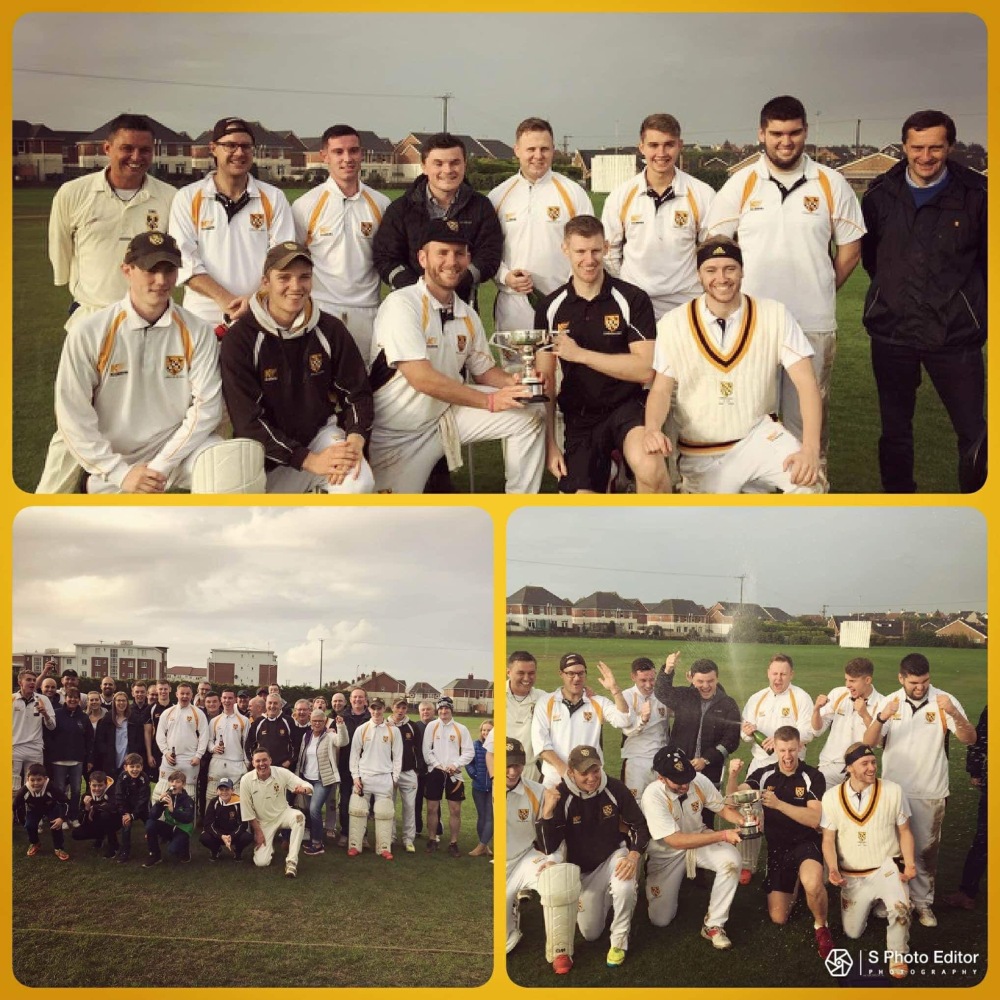Recently I was kindly invited to Cregagh Cricket Club to help investigate a lesser-known aspect of the club’s long and distinguished history.
The club grounds at Gibson Park were first opened in 1904 when Linfield Swifts visited to play in a glamour friendly, though it wasn’t until 1906 when cricket was eventually played here and even later, in 1908, before a team with the name ‘Cregagh’ were featuring.
When the First World War broke out in August 1914 cricket at Cregagh was still very much in its infancy but, as I learned during my visit, the war had a transformative effect on the club and it is still evident to this day. Cricket was suspended during the war throughout the province of Ulster, and it was six years before the game returned to Cregagh in 1920. During this time around 50% of the club’s membership saw service in the Great War which represented around 75% of those who were eligible to serve – a phenomenal rate of enlistment, albeit for a small group of men.

Of the thirty Cregagh cricketers who served in the war eight lost their lives. Between them they were well decorated including two Military Crosses and five Military Medals. They included men like Second Lieutenant Charles J. Ervine of the 27th (Tyneside Irish) Battalion Northumberland Fusiliers who was involved in an intriguing incident on St. Patrick’s Day 1916. A German patrol had planted a German flag directly in front of the Tyneside Irish, halfway across no man’s land. This was received as an insult and it was decided that the flag should be removed. On the night of 15/16 March 1916 Charles Ervine was selected to go and retrieve the flag. He succeeded in his task and later assisted in nailing the stolen flag to a freshly prepared flagpole containing the green flag of Ireland. One conspirator reflected: “Proudly the green banner floated out, while of course we flattered ourselves that the black white and red of Prussia hung its head in shame below.” That evening the officers and men enjoyed an impromptu concert in the trenches. ‘A Nation Once Again’ and ‘Who Fears To Speak of ‘98’ were followed by ‘The Boyne Water’, “in the hope that there might be some native of Homburg opposite who would recognise the air” said Captain Davey. Second Lieutenant Charles Ervine (who previously lived at “Moylena”, 109 Cregagh Road) died from wounds received in action on 6 April 1916 and is buried at Bailleul Communal Cemetery, he was aged just 22. His is not the only fascinating story to be told and the club have now begun a process of gathering information on the Cregagh cricketers who served in the war.
When the war ended in 1918 the Cregagh club endeavored to purchase the Gibson Park playing grounds as a memorial to those club players who served and died. The club’s centenary booklet reflected: ‘What better tribute could be made to Cregagh’s first generation of cricketers, but to ensure that cricket, the game they loved so much, would always be played in their memory on the Cregagh Road.’
The war may have cost the Cregagh club eight of its playing members but, paradoxically, it also had a positive impact by inspiring the remaining members to develop the Cregagh Cricket Club in their memory.
On 10 January 1920 Cregagh Cricket Club and Cregagh Lawn Tennis Club met with a view to amalgamating the two clubs. This was agreed and the Cregagh Athletic Club was formed in order to take part in a range of competitive sports. Their next task was to raise funds to purchase the land from McQuiston Memorial Church and to erect some form of memorial in honour of their fallen friends. The land was eventually purchased for a total of £500 which was vital in ensuring the future of the club. A further £120 was set aside to finance a war memorial of some description.
In early 1920 the first official meeting of the Cregagh Athletic Club took place, and it was at this meeting that a name for the ground was agreed: Cregagh Memorial Recreation Ground. Memorial gates were erected at the main entrance, which in those days was from the Cregagh Road beside Cregagh Presbyterian Church, and the name of the ground was displayed on the gates. In doing so the Cregagh Athletic Club had achieved a fitting tribute to their fallen members by creating a living breathing war memorial on the Cregagh Road, one that continues to live and breathe today.
The club’s memorial gates were officially opened on 30 June 1923 and on that occasion the club secretary Mr Mitchell made a heartfelt speech which included the following sentiments: “Men of their type are not given to any club or community in profusion and it is because of this that the grounds where we knew them best and loved them most have been purchased as a memorial to their memory… we can ensure that the activities that carried on in these fields of sport are of such a nature that our conduct in them be a reflection of their more noble deeds on a sterner field of service. If we succeed in this and I believe we will, not so much because we can but because we must, then indeed will there be a memorial to their memory this ground will be worthy of the name which you have seen fit to give, the Cregagh Memorial Recreation Ground.”
Sadly the gates are no longer present, however, as I witnessed during my visit, the club and its grounds continue to thrive.
I would be delighted to hear from any readers who may have a photograph of the ‘memorial gates’ or, indeed, from anyone connected to any of the thirty cricketers featured on the memorial who may be able to add to our existing knowledge of these men. Please get in touch by email: jburke07@qub.ac.uk
